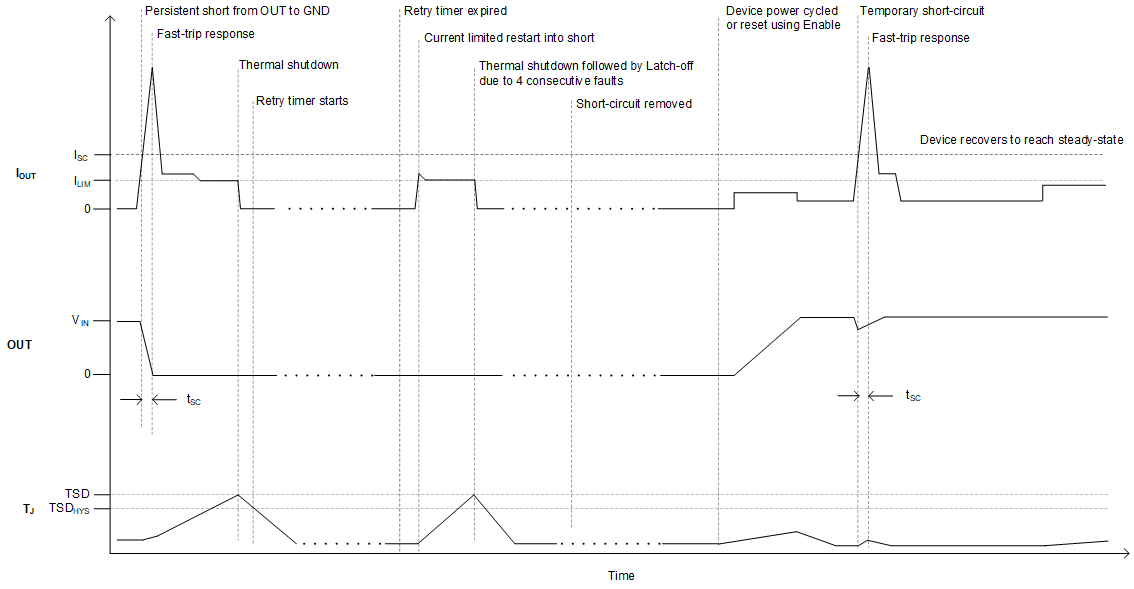ZHCSQ76 December 2022 TPS25961
PRODUCTION DATA
- 1 特性
- 2 应用
- 3 说明
- 4 Revision History
- 5 Pin Configuration and Functions
- 6 Specifications
- 7 Detailed Description
- 8 Application and Implementation
- 9 Device and Documentation Support
- 10Mechanical, Packaging, and Orderable Information
7.3.3.3 Short-Circuit Protection
The current through the device increases very rapidly during an output short-circuit event. In this event, the device engages a fast current clamping circuit to regulate down the current faster (tSCP) as compared to the nominal overcurrent response time (tLIM). Instead of completely turning off the power FET, the device tries to actively limit the current to ensure uninterrupted power in the event of transient overcurrents or supply transients. The device stops limiting the current once the load current falls below the programmed ILIM threshold.
The output voltage drops in the current limiting state, resulting in increased power dissipation in the internal FET and might lead to thermal shutdown if the condition persists for an extended period of time. In this case, the device performs 3 auto-retry attempts to allow the system to recover and then latches-off if the fault persists. See Fault response section for more details on device response after a fault.
 Figure 7-6 TPS25961 Short Circuit Response
Figure 7-6 TPS25961 Short Circuit Response